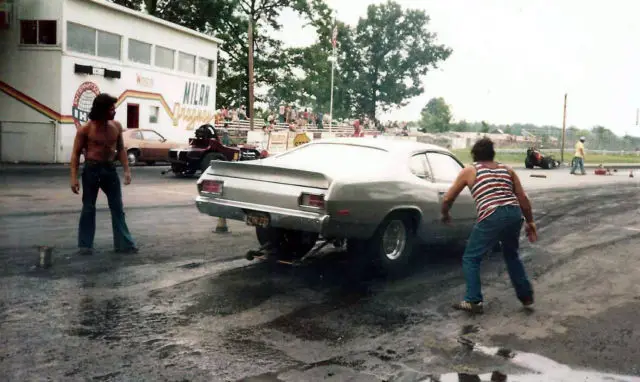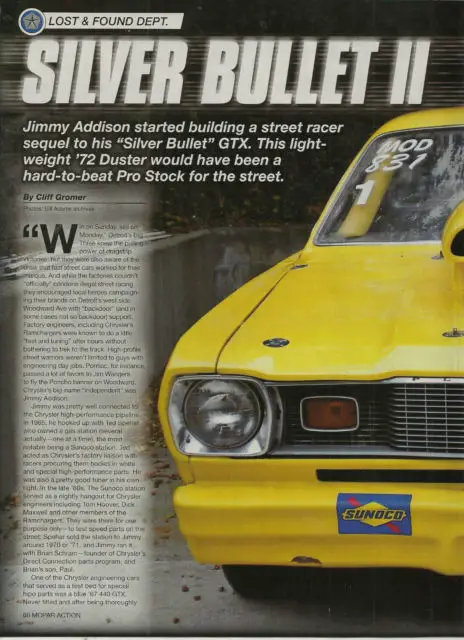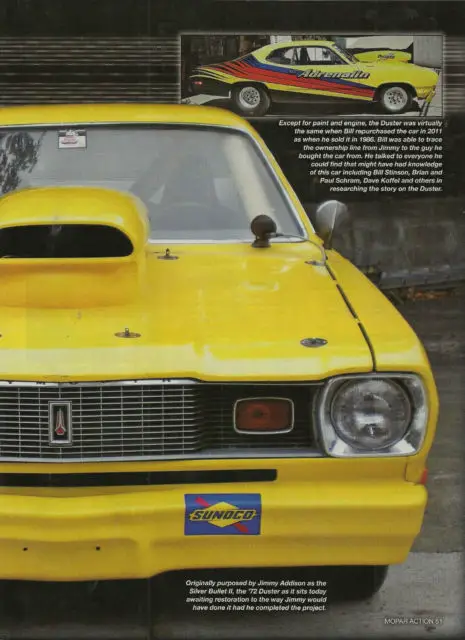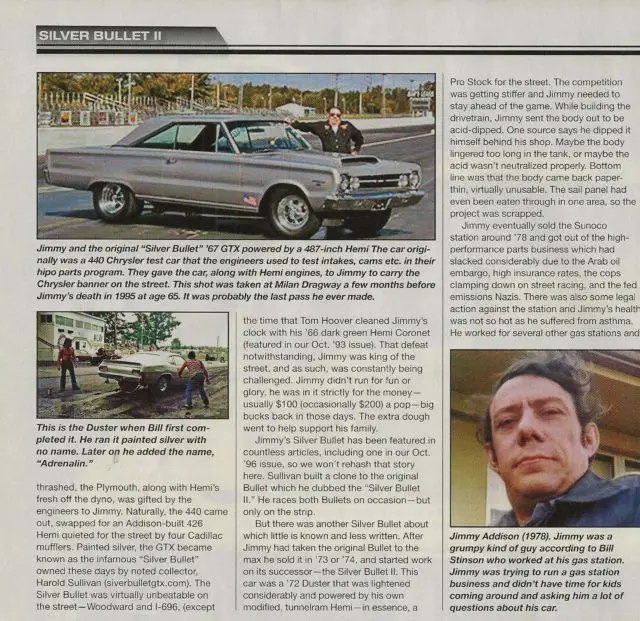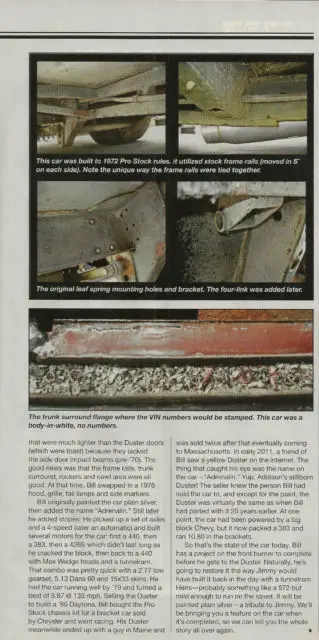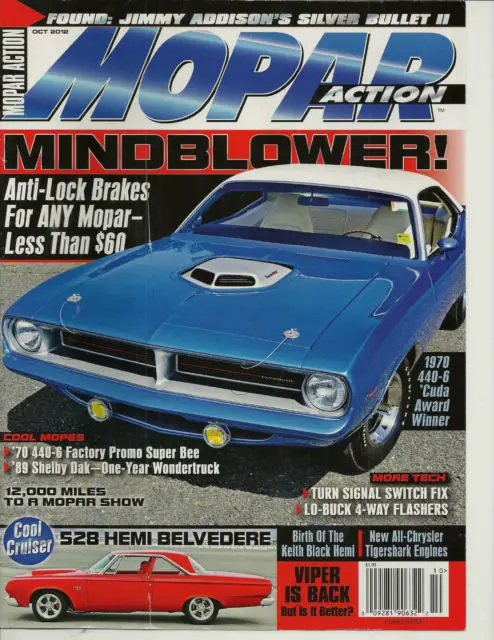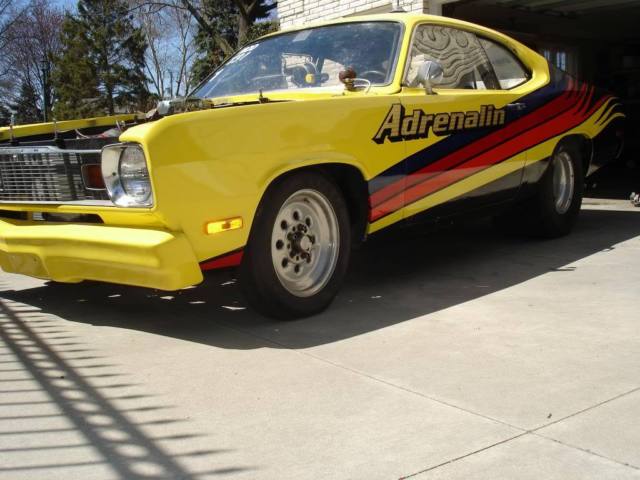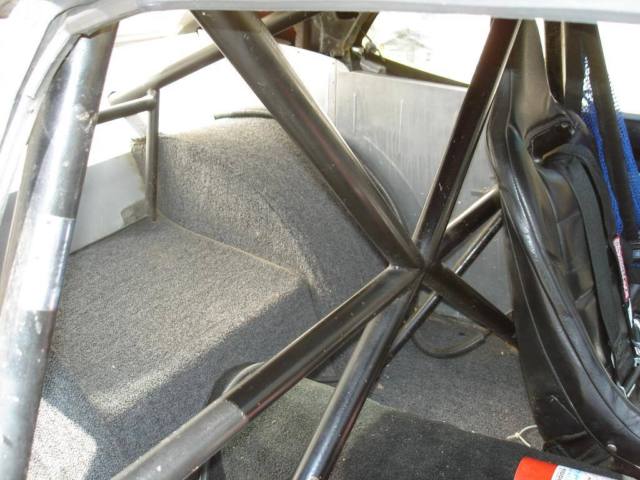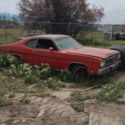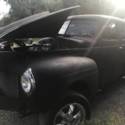Plymouth Duster Silver Bullett II Jimmy Addison's King Of Woodward
| Make: | Plymouth |
| Model: | Duster |
| Trim: | Base |
| Year: | 1972 |
| Mileage: | 100,000 |
| VIN: | VS29H211112222 |
| Engine: | 383 |
| Drive type: | RWD |
| Vehicle Title: | Clear |
| Item location: | Clinton Township, Michigan, United States |
1972 Plymouth Duster Additional Info:
The late Jimmy Addison's "King Of Woodward" Mopar Legend Silver Bullett II 1972 Plymouth Duster is For Sale!
This car is being sold as a non-running project car, needing to be correctly restored to it's originally intended "King Of Woodward" status.
Please call me if serious, this is a great project for the right person...586 917 1718 Bill
Interesting running Mopar trades considered
This car was a "body in white" from Chrysler...no title...bill of sale only!
I have some NOS parts and period correct Hemi parts included...Mag tunnel ram, NOS period correct Holley Dominators, NEW A body race headers
Also included is the original mold for the "Aero" 71-72 vintage Chrysler designed hood scoop
Included is an NOS rear tail light panel, NOS tail lights, VERY nice 1972 sharks tooth grill
Below is some of the text from the "Mopar Action" article when it was featured a few years back:
“Win on Sunday, sell on Monday.” Detroit’s Big Three knew the pulling power of dragstrip victories, but they were also aware of the draw that fast street cars worked for their marque. And while the factories couldn’t “officially” condone illegal street racing they encouraged local heroes campaigning their brands on Detroit’s west side Woodward Ave with “backdoor” (and in some cases not so backdoor) support. Factory engineers, including Chrysler’s Ramchargers were known to do a little “test and tuning” after hours without bothering to trek to the track. High profile street warriors weren’t limited to guys with engineering day jobs. Pontiac, for instance, passed a lot of favors to Jim Wangers to fly the Poncho banner on Woodward. Chrysler’s big-name “independent” was Jimmy Addison.
Jimmy was pretty well connected to the Chrysler high performance pipeline. In 1965, he hooked up with Ted Spehar who owned a gas station (several actually--one at a time), the most notable being a Sunoco station. Ted acted as Chrysler’s factory liaison with racers procuring them bodies in white and special high performance parts. He was also a pretty good tuner in his own right. In the late ‘60s, The Sunoco station served as a nightly hangout for Chrysler engineers including Tom Hoover, Dick Maxwell and other members of the Ramchargers. They were there for one purpose only--to test speed parts on the street. Spehar sold the station to Jimmy around 1970 or ’71, and Jimmy ran it with Brian Schram--founder of Chrysler’s Direct Connection parts program, and Brian’s son, Paul.
One of the Chrysler engineering cars that served as a test bed for special hipo parts was a blue ‘67 440 GTX. Never titled and after being thoroughly thrashed, the Plymouth, along with Hemis fresh off the dyno, was gifted by the engineers to Jimmy. Naturally, the 440 came out, swapped for an Addison-buit 426 Hemi quieted for the street by four Cadillac mufflers. Painted silver, the GTX became known as the infamous “Silver Bullet” owned these days by noted collector, Harold Sullivan. The Silver Bullet was virtually unbeatable on the street--Woodward and I-696, (except the time that Tom Hoover cleaned Jimmy’s clock with his ‘66 dark green Hemi Coronet (featured in our Oct. ’93 issue). That defeat notwithstanding, Jimmy was king of the street, and as such, was constantly being challenged. Jimmy didn’t run for fun or glory, he was in it strictly for the money--usually $100 (occasionally $200) a pop--big bucks back in those days. The extra dough went to help support his family.
Jimmy’s Silver Bullet has been featured in countless articles, including one in our Oct. ’96 issue, so we won’t rehash that story here. Sullivan built a clone to the original Bullet which he dubbed the “Silver Bullet II.” He races both Bullets on occasion--but only on the strip.
But there was another Silver Bullet II about which little is known and less written. After Jimmy had taken the original Bullet to the max he sold it in ‘73 or ’74, and started work on its successor—the Silver Bullet II. This car was a ’72 Duster that waw lightened considerably and powered by his own modified, tunnelram Hemi—in essence, a Pro Stock for the street. The competition was getting stiffer and Jimmy needed to stay ahead of the game. While building the drivetrain, Jimmy sent the body out to be acid-dipped. Maybe the body lingered too long in the tank, or maybe the acid wasn’t neutralized properly. Bottom line was that the body came back paper-thin, virtually unusable. The sail panel had even been eatenthrough in one area, so the project was scrapped.
Jimmy eventually sold the Sunoco station around ‘78 and got out of the high performance parts business which had slacked considerably due to the Arab oil embargo, high insurance rates, the cops clamping down on street racing and the fed emissions Nazis. There was also some legal action against the station and Jimmy’s health was not so hot as he suffered from asthma. He worked for several other gas stations and ended up driving a cab. Not much is known about Jimmy’s Duster because not many people pay attention to a “junk body” parked out of the way in the corner of a gas station.
In 1976, a racer named Bill Adams saw an ad in the Detroit News classifieds for a Duster race car. The seller was Paul Hembree who at one time had worked for Wolverine Chassis, and he had put a 4-link in the Duster. But the body, essentially held together by Bondo and painted in primer was such a mess that Paul gave up, and he sold the car as a rolling chassis with a Dana 60 but no axles. The car had been
Paul Hembree had told him that the car had belonged to Addison. Jimmy’s Sunoco station was on Detroit’s west side and the action there was on Woodward and I-696. Bill was from the east side where ran a ‘64 Max Wedge Belvedere 2-dr sedan on Gratiot---where the east side action was. The street racers tended to stay on their own turf, so Bill had never stopped by Jimmy’s Sunoco.
Hembree said he had bought the Duster from Ron Reader who owned Midwest Auto Parts. Jimmy essentially had unloaded the car to Ron. Midwest had rented space to Booth-Arons, and that’s where the Duster was sitting when Paul bought it
All the chassis work had been done—and done well--when Bill bought the car so he started on the body chipping away at the Bondo and ending up with “tinfoil” sheet metal. It was so bad that Bill had second thoughts about continuing with the race car project. He slept on it before coming to a decision: “screw it. I have it now, I’m gonna fix it.”
Body problems aside, the car was actually pretty trick. The engine compartment had been fitted with an aluminum core support and fabricated aluminum inner fenders and firewall that mimicked the factory sheetmetal. The flat floorpan also had been fab’d from aluminum. The K-member was moved forward 1-1/2" and was welded to the frame rails which were moved in 5 in. on each side to make room for big tires.
The engine location was legal for 1972 Pro Stock, meaning the spindle was in line with the number 1 sparkplug. The front bars tied into the frame rails and rollcage, The coilover shock bracing was very heavy duty in keeping with the intended street use. This was likely added by Jimmy. The chassis and tinwork, however was top drawer—not your typical hot rodder knife and fork job, and probably already had been done when Jimmy received the car from Chrysler, as chassis work wasn’t Jimmy’s thing. Motor plates were standard fare for the era.
The wheelbase had been altered--moved forward 1-1/2” front and rear as was the practice in Pro Stock in those days.
Then there were some trick lightweight parts, like titanium strut rods (but stock lower control arms with coilovers.) A rack and pinion had been installed and the front brakes were super-lightweight Hurst-Airheart discs (they weighed about 5 lbs. and were really trick for ’72). Bill assumed these had been hand-me-down parts from Chrysler. And yeah, there was that parachute mount—somebody obviously was planning on going fast.
Had this car originally been destined for the “Missile” program? Evidence pointed to the car starting out as a body-in-white (it had never been VIN’d)--an easy score by a guy like Jimmy with his Chrysler connections. Bill contacted some of the “Missile” guys, but nobody there could confirm that this Duster had been connected with their program.
When Bill bought the Duster from Hembree, he was told that the car originally had been earmarked as a Match Race car. That made sense as the trick parts wouldn’t have passed Pro Stock tech. Also, the car came with a set of beautifully molded Plexiglass widows (also not legal for Pro Stock) neatly wrapped in paper.
To repair the body, Bill cut off the roo, tail panel and quarter panels and replaced them with NOS stock parts minus the factory inner panels. .He found a pair of ‘67 Dart doors that were much lighter than the Duster doors (which were toast) because they lacked the side door impact beams (‘67 only.) The good news was that the frame rails, trunk surround, rockers and cowl area were all good. At that time, Bill swapped in a 1976 hood, grille, tail lamps and side markers.
Bill originally painted the car plain silver, then later added the name “Adrenalin.” Still later he added stripes. He picked up a set of axlesand built several motors for the car: first a 383, then a 426, which didn’t last long as he cracked the block, then back to a 440 with Max Wedge heads and a tunnelram. That combo was pretty quick with a 2.77 low gearset, 5.13 Dana 60 and 15x33 skins. He had the car running well by ’79 and turned a best of 9.87 @ 135 mph.
Selling the Duster to build a ’86 Dayton, Bill bought the Pro Stock chassis kit for a bracket car sold by Chrysler and went racing. His Duster meanwhile ended up with a guy in Maine and was sold twice after that eventually coming to Massachusetts. In early 2011, a friend of Bill saw a yellow Duster on Racing Junk. The thing that caught his eye was the name on the car—“Adrenalin.” Yup, Addison’s stillborn Duster. The seller knew the person Bill had sold the car to, and except for the paint, the Duster was virtually the same as when Bill had partedwith it 20 years earlier. At one point, the car had been powered by a big block Chevy, but it now packed a 383 and ran 10.80 in the brackets.
So that’s the state of the car today. Bill has a project on the front burner to complete before he gets to the Duster. Naturally, he’s going to restore it the way Jimi would have built it back in the day with a tunnelram Hemi—probably something like a 572 but mild enough to run on the street. It will be painted plain silver—a tribute to Jimmy. We’ll be bringing you a feature on the car when it’s completed, so we can tell you the whole story all over again.
